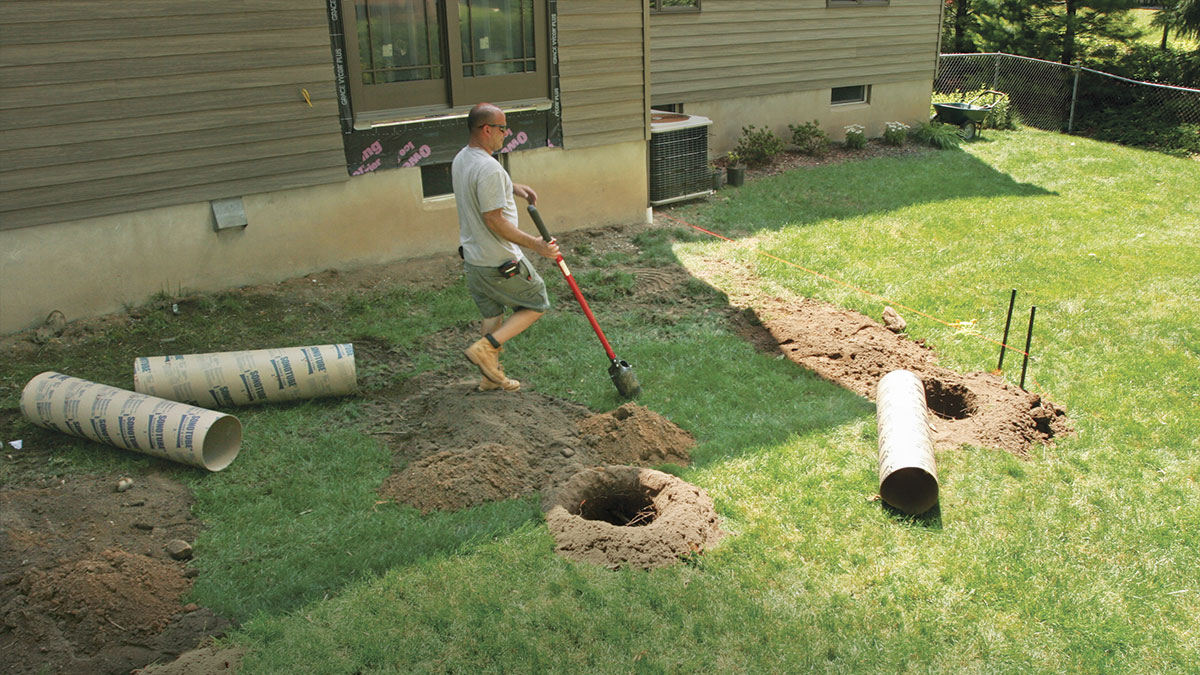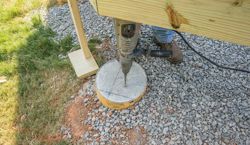Structure from the Ground Up: The Ultimate Overview to Creating and Setting Up Deck Footings
Structure from the Ground Up: The Ultimate Overview to Creating and Setting Up Deck Footings
Blog Article
Professional Tips for Setting Up Deck Footings to Support Your Outdoor Room
When it involves developing a deck, one of one of the most important aspects to take into consideration is the installment of correct grounds. These footings are the structure whereupon your exterior space will relax, providing security and support for many years to find. However just what does it require to install deck footings correctly? In this discussion, we will explore skilled suggestions and techniques that can aid ensure a successful and durable deck installment. From picking the appropriate kind of footings to staying clear of common errors, we will give you with the understanding and understandings you require to with confidence start your deck-building trip. So, allow's dive right in and find the trick to a strong and resilient outside space.
Significance of Proper Deck Footings
Proper deck footings are crucial for guaranteeing the stability and longevity of your exterior space. Without solid and properly set up footings, your deck might come to be unstable, leading to safety threats and expensive repair work.

Along with stability, appropriate deck footings also add to the longevity of your outside area (Deck Footings). Footings that are created and constructed to endure the aspects and dirt conditions in your location will assist stop the deck from changing or resolving in time. By making sure the grounds are correctly sized and installed, you can reduce the danger of damage to the deck structure, extending its life expectancy and reducing the demand for costly repairs or replacements

Picking the Right Sort Of Grounds
When selecting the appropriate kind of grounds for your deck, it is essential to consider variables such as dirt problems, neighborhood building regulations, and the overall layout of your outdoor area. The sort of footing you choose will play a crucial role in making sure the stability and long life of your deck.
One typical sort of ground is the concrete footing. Concrete grounds appropriate for the majority of soil problems and provide outstanding support for decks. They are commonly mounted below the frost line to protect against changing and working out due to freezing and thawing cycles. Another option is helical piers, which are suitable for areas with unpredictable soil or high water tables. These piers are screwed right into the ground and give solid support for the deck.
In some situations, you may require to make use of specific grounds, such as pile grounds or deep foundations, if you are constructing a multi-level or huge deck. These footings are developed to distribute the weight of the deck over a bigger area, making certain security and preventing resolving or sinking.
Prior to picking a type of ground, it is essential to speak with regional building ordinance and policies to guarantee compliance. Additionally, consider the style and planned usage of your outdoor area. Variables such as the dimension, form, and load-bearing demands of your deck will affect the sort of footing that is most appropriate.
Preparing the Ground for Footing Setup
To properly prepare the ground for footing installation, it is special info crucial to analyze the dirt conditions and take essential steps to make sure stability and toughness of the deck. The first step is to dig deep into the area where the footings will certainly be installed.
When the location has been excavated, the following action is to compact the soil. This can be done making use of a plate compactor or by utilizing a hand tamper. Condensing the dirt assists to remove any spaces or air pockets, which can lead to clearing up and instability over time.
After condensing the dirt, it is necessary to lay a layer of gravel or crushed rock at the base of the excavation. This will offer drain and aid to avoid water from merging around the grounds, which can result in erosion and instability.
Step-by-Step Overview to Putting Up Deck Footings
After appropriately preparing the ground for footing installment, the next step is to begin the process of installing deck footings. This step-by-step guide will offer you with a clear understanding of exactly how to set up deck grounds for your exterior space.
Figure out the place: Begin by marking the placements of the deck footings using stakes and string. Make certain that the areas align with the design and format of your deck.
Dig the openings: Use a blog post opening miner or an auger to dig the openings for the grounds. The deepness and diameter of the holes ought to be in accordance with local building codes and the particular demands of your deck style.
Level the holes: Utilize a level to make sure that the holes are dug to the appropriate deepness and are level with each other. (Deck Footings)
Add crushed rock: Place a layer of crushed rock at the base of this page each hole to enhance drain and prevent the timber from decaying.
Insert the grounds: Place the grounds right into the holes, seeing to it they are level and plumb. Use a level and a gauging tape to ensure accuracy.
Secure the footings: Pour concrete into the holes around the footings, filling them to the top. Use a post level to guarantee the grounds stay level as the concrete sets.
Allow time for healing: Allow the concrete treatment according to the maker's guidelines prior to proceeding with the deck building and construction.
Typical Errors to Stay Clear Of Throughout Footing Installation
One important aspect to consider throughout the setup of deck grounds is avoiding usual errors that can compromise the stability and longevity of your exterior space. While deck grounds may feel like a easy and straightforward component of the building process, overlooking particular variables can lead to pricey repairs and potential safety and security dangers down the line.

Additionally, ignoring to set up proper water drainage actions can trigger water to gather around the footings, bring about rot, decay, and the eventual weakening of the deck's foundation. Using the wrong kind of footing material or failing to effectively secure the grounds can endanger their structural stability.
To avoid these errors, it is important to speak with a professional or follow sector guidelines to ensure appropriate ground setup. By doing so, you can ensure the security and longevity of your outdoor check room, giving a risk-free and satisfying setting for years to come.
Verdict
In verdict, installing correct deck footings is important for the security and durability of your exterior room. By selecting the ideal sort of footings and appropriately preparing the ground, you can make sure a strong structure for your deck. Complying with a step-by-step guide and preventing common mistakes during footing installation will certainly better boost the durability and safety of your deck.
Proper deck footings are necessary for guaranteeing the security and long life of your exterior space. The footings offer as a connection between the ground and the deck, allowing the weight of the deck and its owners to be distributed equally right into the soil.One common type of footing is the concrete footing. Insert the grounds: Put the grounds right into the holes, making sure they are degree and plumb. Safeguard the footings: Pour concrete right into the holes around the grounds, loading them to the top.
Report this page